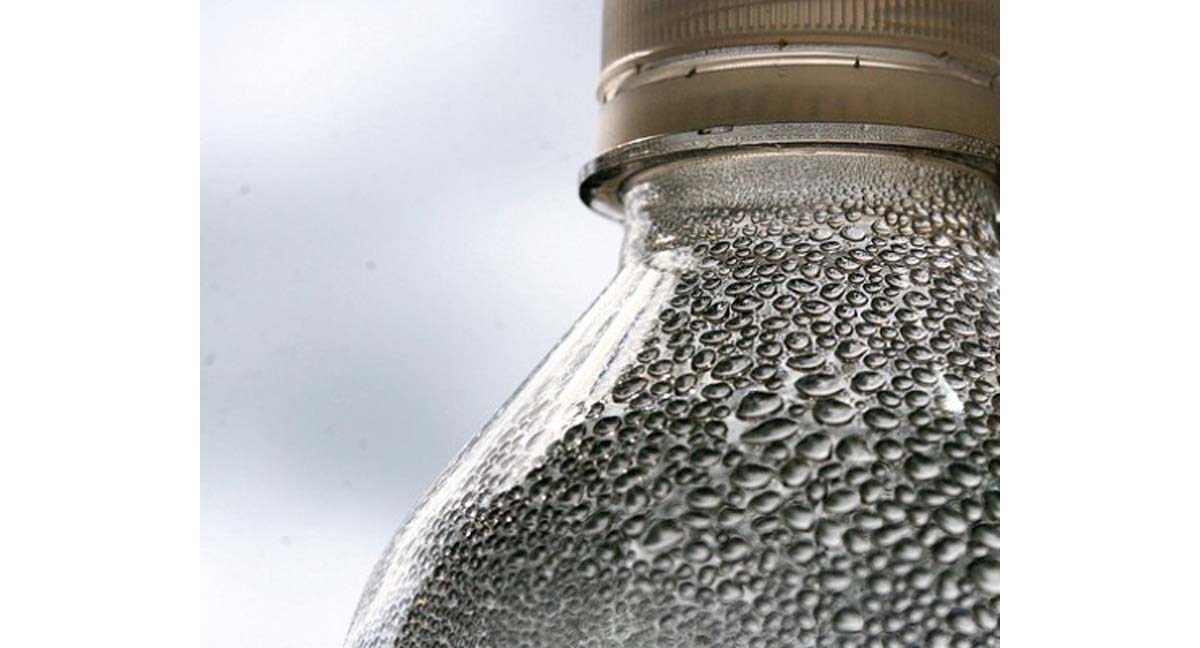Table of Contents
French authorities became alarmed at 262,000 tons of plastic waste generated from drinking water bottles. Recognizing the cost to the sanitation ministries and environment, officials started campaigns to persuade French people to drink more tap water.
In all but a very few parts of the world, bottled water is reliably free of disease-causing microbes and toxic pollutants, at least when the water is put into the bottle. Water stored in glass bottles is generally safe even when stored without temperature control or for years at a time, although bubbly water may go flat. Most countries offer a financial incentive to make sure glass is recycled.
 Plastic water bottles, however, pose a special problem for consumers. Most plastic containers for water are made with a chemical called bisphenol-A, or BPA. Leaching out of the plastic in the bottle, BPA can disrupt the action of many different kinds of hormones. Over 200 scientific studies have found that exposure to BPA results in:
Plastic water bottles, however, pose a special problem for consumers. Most plastic containers for water are made with a chemical called bisphenol-A, or BPA. Leaching out of the plastic in the bottle, BPA can disrupt the action of many different kinds of hormones. Over 200 scientific studies have found that exposure to BPA results in:
The European Union and a few cities in the USA have now banned the use of BPA in baby bottles. Bottled water for adults usually comes in containers that are still made with BPA. The presence of toxins in the plastic water bottles, however, is just part of the problem. Recycling or disposing of the trash generated by plastic water bottles is an enormous logistical problem.
While the French generate 220,000 tons of trash from water bottles each year, Americans put 1.5 million tons of used plastic water bottles in the trash every year. That doesn't count the 500,000 tons of plastic water bottles that don't make it into a trash can. So many plastic water bottles wind up in the ocean that a vast swirling eddy of plastic garbage larger than the American state of Texas has formed in the Pacific Ocean, and a slightly smaller area some scientists call a "plastic soup" has formed in the Atlantic Ocean. These floating garbage dumps kill wildlife and may even alter the weather.
When you have to buy bottled water, look for local brands. They don't have to be shipped from the other side of the world for your drinking pleasure. Whenever possible, drink rain water bottled locally. It contains small amounts of minerals your body needs (or your plants need), and it comes from a renewable source.

- Earlier puberty in females and smaller testicles in males.
- Birth defects causing malformed penises in male babies and menstruation in girls as young as the age of six.
- Greater addictive effects of the brain chemical dopamine, increasing urges for eating, sex, gambling, and risky behaviors.
- Weight gain due to failure of thyroid hormone to be transformed into its active form.
- Feminization of male behaviors.
- Erectile dysfunction.
The European Union and a few cities in the USA have now banned the use of BPA in baby bottles. Bottled water for adults usually comes in containers that are still made with BPA. The presence of toxins in the plastic water bottles, however, is just part of the problem. Recycling or disposing of the trash generated by plastic water bottles is an enormous logistical problem.
While the French generate 220,000 tons of trash from water bottles each year, Americans put 1.5 million tons of used plastic water bottles in the trash every year. That doesn't count the 500,000 tons of plastic water bottles that don't make it into a trash can. So many plastic water bottles wind up in the ocean that a vast swirling eddy of plastic garbage larger than the American state of Texas has formed in the Pacific Ocean, and a slightly smaller area some scientists call a "plastic soup" has formed in the Atlantic Ocean. These floating garbage dumps kill wildlife and may even alter the weather.
What Can Consumers Do?
There will always be times bottled water is a necessity. If your city's water system goes out, you should not deprive yourself of water just because you can't afford Pellegrino or Perier in their well-known green bottles. However, you can save money and protect the environment by buying a steel thermos bottle for carrying your daily drinking water, and a filter for your tap to make tap water tastier and more aesthetically pleasing, as well as safer. Water filters can reduce the amount of chlorine and organic chemicals, and some filters are even able to remove lead from the water. As well as offering a safer solution for your tap water, these filters can even render water from ponds and rivers safe in survival situations — and they are, as such, a must-have for campers and hikers. Filtering water with high-quality filtering systems is, in many ways, the golden middle road. Neither unfiltered tap water nor bottled water, but filtered tap water, could be the safest, tastiest, and more environmentally friendly choice.When you have to buy bottled water, look for local brands. They don't have to be shipped from the other side of the world for your drinking pleasure. Whenever possible, drink rain water bottled locally. It contains small amounts of minerals your body needs (or your plants need), and it comes from a renewable source.
- Robert D. Morris, The Blue Death: The Intriguing Past and Present Danger of the Water We Drink (Harper Paperbacks, 2008).
- Photo courtesy by Muffet on Flickr: www.flickr.com/photos/calliope/542497582/

